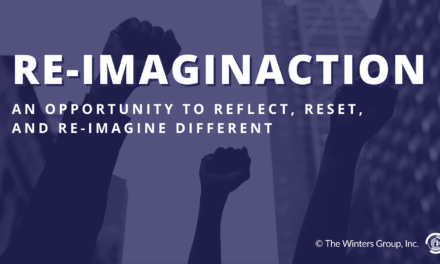
Several months ago, I was beyond thrilled to see a leadership position available for a local nonprofit organization that works at the intersection of my three biggest passions: antiracism and equity, education, and communications. I not only had the expertise, previous professional experience, community relationships, and passion for the role, but this organization had been close to my heart for a while for doing work in the very community that I grew up in. Specifically, this organization works to hold the local school system accountable for increasing educational equity for Black and Brown students.
I had spent ages 4 through 18 living, playing, working, and just being in this community — a predominantly Black, Brown, and immigrant community. I spent my entire formal education (K-12) within the very school system they work with. I additionally was placed in an English for Speakers of Other Languages (ESOL) class. After 13 years away from my hometown, I relocated back to raise my kids here. This organization’s biggest stakeholder demographic that they advocate for are Black, Brown, and immigrant families — the last two identities which I hold myself based on my Filipino heritage — and all three identities are the majority of people in my neighborhood, workplace, church, and other social and professional settings. Moreover, our community is a largely Latino immigrant community, and I minored in Spanish in college. Filipinos are also distant cousins of Latinos, with our shared Spanish colonizations, and I have found many other parallels between our languages, cultures, and traditions.
I felt that I was well qualified for this role, as I not only had the educational and professional background, but my 34 years of lived experience in my own body could not possibly be rivaled by most. I had always been, and still am currently, part of the communities and identities this organization stands with in solidarity.
On paper, I think this organization’s leadership team was excited to interview me — a multiracial immigrant who grew up and still resides in the community and identifies with the organization’s key stakeholders. However, in the interview, I could immediately sense that the interviewers were disappointed because I may not have appeared Black or Brown enough for them.
This org was excited to interview me — a multiracial immigrant who identifies with key stakeholders. However, I could sense their disappointment because I may not have appeared Black or Brown enough. Click To TweetI was shocked, disappointed, and quite frankly, upset and caught off guard, when two Black and Brown men repeatedly asked questions like:
- Well, you do know that the communities we work with are predominantly Black and Brown, right? Is that okay with you?
- What experiences do you have communicating with Black and Brown communities?
- Do you think you would feel comfortable communicating with Black and Brown people and going into their communities?
- Other than your children identifying as Black or Brown, what experiences do you have with Black and Brown communities?
I stumbled over my responses because I was in complete and utter shock. I think I may have just said something like, “What do you mean by this? I live here and I’m from here … so … I mean … my life is my experience.”
I knew they didn’t like my answer. I also knew that if my skin were just a few shades darker, I would never have been asked these questions because it would be clear that my lived experiences show that I am part of the community. Could you even imagine asking a Black person any of those questions? It was clear that although I identified myself within these groups, these two men did not. They viewed me as an outsider. They didn’t view me as part of the very community that I am from and still live in.
This is something I have grappled with my entire life, because my family embraced my whiteness more than anything else, which led me to believe that most other people in the world also identified me as white. It wasn’t until I reached college and early professional settings that Black and Brown women leaders reached out to me for mentorship and affinity group membership, and I began to realize that they identified me as one of their own. Finally, I had a frank conversation with some of these close friends and mentors that revealed that most people notice my multiracial identity immediately. It really does not matter, anyway, how others perceive my identity, but I needed to reflect upon and embrace my own experiences and how my experiences shaped my identity and worldview. This is when I started fully honoring the entirety and complexity of who I am as a multiracial woman.
My family embraced my whiteness more than anything else. It wasn’t until college that Black and Brown women reached out to me for mentorship. This is when I started fully honoring the entirety of who I am as a multiracial woman. Click To TweetThese two men who interviewed me didn’t think my Filipino birth and immigration, culture, language, and traditions allowed me to identify as an immigrant or as a Brown person, simply because I am also white and my skin is lighter than they may have preferred. (Spoiler alert: I am not even a U.S. citizen. I have held a permanent resident card for more than 30 years, so it is quite possible that I relate to the immigrant population within my local community more than anyone who is currently part of this organization’s leadership.) This is not a new experience for me, though. This is something I have often struggled with, particularly with white friends, white family members, and white colleagues. When it was convenient (or when they wanted to say something racist in front of me), they could identify me as white and dismiss my Brown identity. I just never expected to experience it from other Black, Brown, and immigrant people.
With white friends, family, and colleagues, they could identify me as white and dismiss my Brown identity. I never expected to experience it from other Black, Brown, and immigrant people. Click To TweetI often think about the complex and unique experience of living with a multiracial identity, especially the experience of never being enough of one identity to represent any of them well enough to anyone else. If I say something about white experiences or whiteness, people tell me that I don’t know what I am talking about despite growing up with a white family and presenting as white in some spaces. Also, when I say something about Filipino or Asian experiences, the same thing happens, despite also growing up with a Filipino family and presenting as Filipino/Brown in some spaces. If I say anything critical about either identity (white or Asian), I am deemed racist, although I am reflecting on my own lived experiences within each respective identity.
I often think about the complex and unique experience of living with a multiracial identity, especially the experience of never being enough of one identity to represent any of them well enough to anyone else. Click To TweetRecently, a friend — who is surprisingly also multiracial — asked me why I always advocate for Black and Brown people but “never do anything for [my] own people.” I was perplexed because I use the terms “Black and Brown” the way others may use “Black, Indigenous, people of color” (BIPOC) or other terms. I have always felt Filipinos/Asians to be part of this group. I wanted to shake him and say, “Well, you as a multiracial person would also be included in this group when I say Black and Brown.” So, what should we call multiracial people who may have lighter skin? We aren’t accepted as white but we aren’t accepted as Brown either?
I also said to this friend and would want to ask those two men who interviewed me: What more do you want me to do? The very essence of my existence is representing my people and my community.
I can listen to country music, hip-hop, or Filipino ballads. I might watch That ’70s Show or a cheesy Filipino love story (accompanied by the aforementioned ballads). Some days I cook chicken adobo or sinigang but other days I make fried chicken or spaghetti. My children have a lola, a ninang, titas, titos, as well as grandparents, aunties, and uncles. My children don’t know what a spanking is, but they do understand what a palo is. I start decorating for Christmas in the “ber months” (as they are referred to in the Philippines) and put up a parol and Black Santa. My cultures, my languages, my traditions, my families, and who I am should be enough to represent my people — all of my people. That should have also been enough for any prospective employer to know my experiences communicating with Black and Brown people and communities — my people and my communities.


















